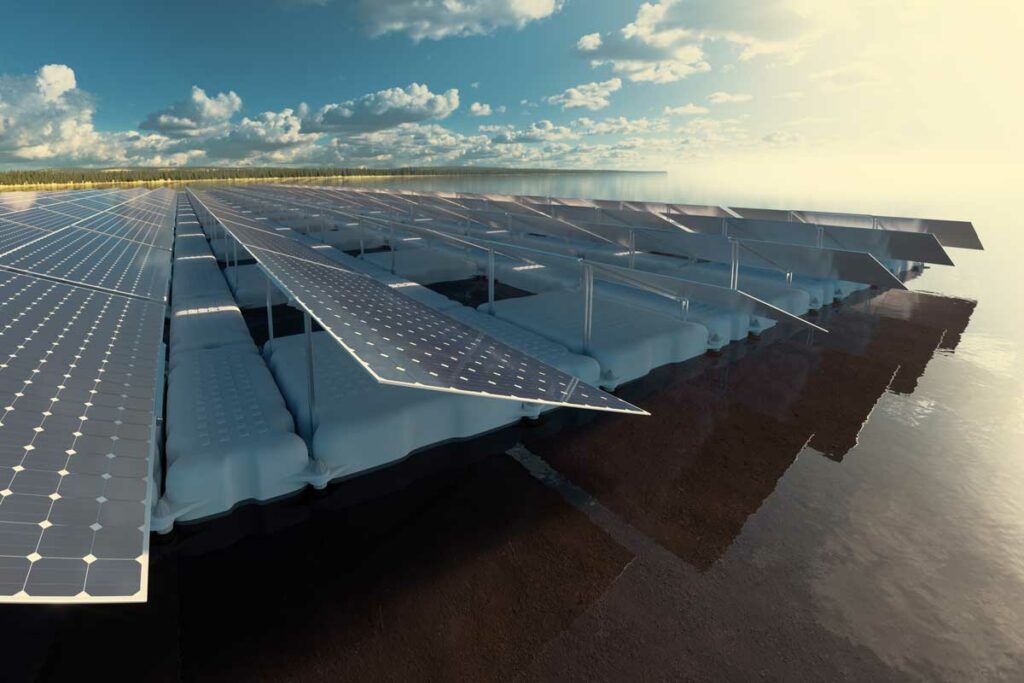Floating Solar’s Bright Horizons
Going into this week’s Seanergy 2021 – France’s leading international conference for marine renewables and offshore wind – we asked one of our French-based marine renewables’ specialists, Innosea’s Benoit Briere, to share some insights on one of the emerging ‘future energy heroes’ of today – floating solar photovoltaics (‘FPV’), and to discuss where he sees the technology’s current trajectory of growth going.

In case you missed it over the summer months whilst enjoying a bit of fun in the sun, the season this year has actually seen solar hotting up in more ways than one. Indeed, recent months has seen promising signs of progress for the floating solar photovoltaics (FPV) industry.
At the start of summer, Masdar Clean Energy, part of Abu Dhabi government’s Mubadala Investment Company and a leading developer and operator in renewable energy projects, confirmed the final investment decision for a 145MW floating solar PV project on Cirata reservoir, in Indonesia. The project will be Indonesia’s first utility-scale FPV plant. Due to be commissioned in 2022, it was set to be the largest floating solar PV project in the world outside of People’s Republic of China.
However, that prospective record has already been beaten with French utilities EDF committing to the development of an even larger project – a hybrid floating solar project on the reservoir of the Nam Theun 2 hydropower project in Loas, with a capacity of up to 240MWp. Nam Theun 2-Solar will be the largest hybrid FPV project in the world, with construction expected to begin in 2022 and operations in 2024.
Both news items confirm East Asia’s leading place in the current floating solar development. What about Europe and other markets for FPV then?
Big projects may be on their way as well, with a potentially game-changing auction due later this month in Portugal. This auction – specific to floating solar projects – would total no less than 500MWp. In France, with several projects currently under construction, the total installed capacity will have tripled by the end of this year compared to the same date last year.
Though rather small-scale compared to other projects mentioned here, North African countries Tunisia and Morocco are also both making strides into developing the first FPV plants for their respective countries, extending the global FPV footprint to the wider Mediterranean region. In the far-eastern side of the Med, EDF is set to install one of the largest FPV plants in the region, in Israel for almost 20MWp.

These plans reflect Europe and the Mediterranean’s bright horizons ahead for FPV, but there are a lot of unknowns still surrounding what this local floating solar market will look like. Could the Med become to floating solar what the North Sea has been for offshore wind? Will development in the region be driven by a large number of medium-scale projects, or are we going to see large projects as those observed in South-East Asia? Will we witness the development of nearshore of offshore floating solar, in this region where inland water bodies may be rare in certain areas?
Committed to exploring the commercial and scalable viability of FPV to support different countries’ race to a net-zero economy, we may not have a crystal ball to predict what lies ahead, but we will definitely be monitoring the sector’s developments closely. One thing recent months have certainly shown us is that this is a fast-maturing industry, which continues to challenge the limits of what can be considered a feasible green energy solution.
